Filling the heating system with coolant: how to fill with water or antifreeze
Each year, at the end of the heating season, autonomous water circuits that carefully supply heat to the owners are released from water or antifreeze that replaces it. With the onset of the first cool days, the heating system is again filled with the coolant necessary for its operation.
It is worth to familiarize yourself with the procedure for performing this difficult work and the necessary equipment so as not to make mistakes. In this material we will talk about how to properly fill the system with water and a non-freezing coolant, about the rules that must be observed during operation, and also about how to correctly calculate the amount of coolant.
The content of the article:
How to fill the heating circuit with water?
Due to fluidity and high heat capacity, heat is used to transfer heat from the boiler to consumers liquid coolantsamong which the first place is water.
It is used to fill even the most capacious heating systems. It is publicly available and inexpensive, which determines the widest scope.
Both pumped from natural reservoirs or wells, and tap water has many impurities and mineral inclusions. When boiling, impurities are deposited with scale on the walls of the boiler and form growths similar in composition to the pipes.
These deposits are extremely harmful to systems with the latest modifications to heating units. Therefore, water must first be cleaned, boiled, or, if the means allow you to buy distillate.
The second disadvantage of water is its ability to contain oxygen, which causes metal corrosion. Due to the high mineralization, coupled with the oxygen released during heating, water is not recommended to be changed in heating circuits more often than once a year.
The weighty advantages of water as a coolant are optimal viscosity and heat capacity. It accumulates and gives off heat better than antifreezes by 15-20%. It is inferior to them in fluidity, due to which it does not seep through the seals of detachable joints of the system, in viscosity, due to which it moves faster through pipes.

Calculation of the volume of coolant to fill
To correctly fill your own heating system with water, you need to determine what it will be needed in liters. The volume of coolant can be calculated without any problems.
To do this, summarize:
Vsyst. heating= Vboiler + Vexpansion tank + Vradiat. + Vpipes
The useful volume of the boiler is usually indicated by the manufacturer in the technical documentation for the equipment it produces. Capacity sectional radiators too. If such information cannot be found, then there are averaged indicators.
V of one section of the radiator, depending on the case material:
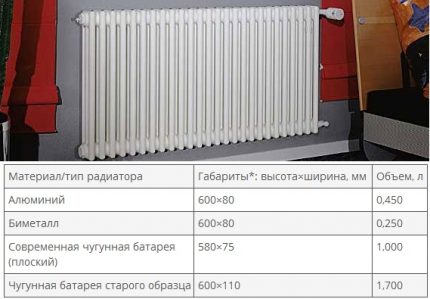
The total radiator volume is found by multiplying this figure by the number of sections.
Vexpansion tank closed type before purchase is selected so that its usable volume is equal to or slightly higher than the volume of water, taking into account thermal expansion. This means that this parameter must also be known.
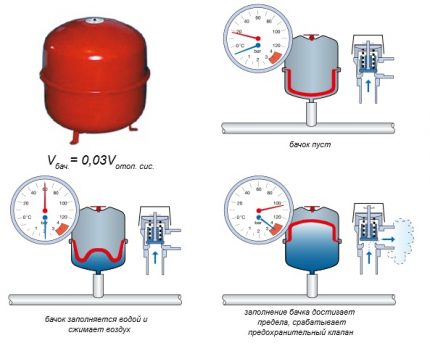
For open heating systems with an expansion tank freely communicating with the atmosphere, the volume is taken according to the actual dimensions.
Pipe Volume:
V pipe = 0.786 × D2× L
where D is the inner diameter of the pipes, L is the length of the pipes.
The volume of the system will then be equal to:
V systems = V pipes + V boiler + V expansion tank + V consumers.
Where V consumers is the sum of volumes, a boiler and other devices. Their volumes can be found in technical documentation or calculated. The estimated volume is tedious to increase by 15 -20 percent, i.e. multiplying by 1.15 or 1.20.
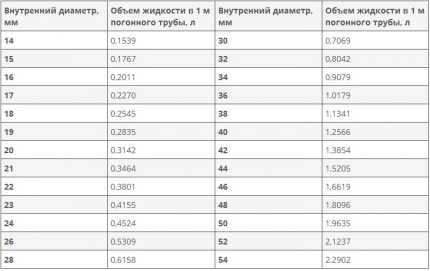
A more laborious way is to fill the system with tap water and then drain, measuring the volume with a meter or volumetric containers.
Tap water is sometimes used, but it greatly reduces the heating time. Saving the ruble, we lose thousands. In this case, it is better to pass water through special membrane or chemical cationic filters.
To fill the heating we also need adapter hoses and a pump for pumping liquid.
Dependence of the pouring technique on the cause
The principles of filling affect the sequence of work. If this is a new system, we check it visually and carry out tests, pressure testing by overpressure, injecting air or liquid about 2-2.5 atmospheres (norm 1.25 part of the working pressure, but not less than 2 atmospheres). By the pressure gauge we control the absence of pressure drop.
To fill small heating circuits, you can take a car pump instead of a compressor. Sometimes pressure testing is carried out directly with a liquid, using a centrifugal pump, after connecting expansion tank to the system. For small volumes, a hand pump with a liquid compartment can be used.

If we carry out periodic cleaning of the system with the replacement of water, then it is necessary to first drain the liquid, preparing a place or container for it. Having waited for cooling of the heat carrier, we dump excess pressure, having turned off the nipple.
At the upper point, open the valve or Mayevsky valve for communication with the atmosphere. At the lower point, gradually open the drain cock. With a sharp opening, water hammering occurs, leading to damage. You have to be careful here.
Drain the coolant, fill the system with flushing fluid and use the pump to ensure its circulation.

Then washed with clean water with additives and a neutralizer, designed to neutralize the additives of the first washing.
After these operations, as in the first case, the heating is pressure tested. Identified leaks and weak points are usually found in places of welding and threaded joints.
Cast iron batteries are equipped with connecting gaskets, which eventually dry out, coarsen and leak when cooled. They should be replaced and additional battery tightening should be carried out. After the repair work, crimping is again carried out and, if the result is positive, we proceed to the next step.

Water is filled through the bottom with the top open. Having connected the electric pump, we pump water through the tap into the system. Moreover, the crane is open half or less to exclude water hammer. The system gradually fills up, which confirms the noise from the movement of water and a slight gurgling. We finish when water starts to flow from the top point.
Then we begin to bleed air from connected consumer appliances, a boiler, boilers, an expansion tank with a membrane and batteries using existing taps and valves. Next, we connect a transparent hose to the top point of the system, which we lower into a tank with a coolant.
Turning on the pump, we additionally fill the heating until water flows out of the transparent hose in the tank without air bubbles.
If it is possible, after, you can loop the pumping system with a hose and drive the coolant several times. This will provide additional degassing.And finally, air is pumped behind the expander’s membrane, providing the necessary pressure for the heating circulation pump to work, which we turn on to run without heating.
For a complete check of the quality of filling the system, it is necessary to turn on the heating in a trial order and to determine if air congestion and uniformity of heating using a thermal imager or infrared temperature meter.

At the same time, using taps or modern temperature controllers, the installation and adjustment of room temperatures is carried out. The effectiveness of thermal insulation is also evaluated. It is necessary to provide a stock of purified water and the means to add it to the system to avoid evaporation losses. All these actions are designed to ensure trouble-free operation of heating for the winter period.
Rules for heating recharge
Recently, not only in private homes, but also in apartments began to arrange individual heating. Usually set double-circuit boilershaving a make-up module.
And it’s easier to learn how to feed yourself than to call the wizard, for this:
- We open the tap at the bottom of the boiler, then, at the top of the system, the air discharge valve and when water appears close it and the make-up valve.
- Turn on the boiler and if gurgling and gurgling is heard in the pump, then we remove the outer casing from the boiler and find it.
- Weaken, but do not unscrew the screws screwdriver to bleed air from it until moisture appears. The pump has a screw cap for this. Although it is written in the instructions that these boilers have automatic air vents, they cannot completely remove it.
Especially at the first start-up of heating, it is necessary to gradually, smoothly heat the coolant to exclude damage from water shocks. Do not immediately turn on the boiler at full power. When stopping heating, it is also important to slowly lower the temperature.
This is especially important for long heating networks, which have a significant deformation, thermal expansion. From this expansion or contraction, holding fasteners or forms, stresses are formed that discharge discontinuously, transmitting a shock to the liquid.
Fluid, depending on the cross sections, can increase the force of impact and produce destruction in another place, usually on bends. And if resonance arises, then the loads increase at times and the pipes even break off the fasteners. They begin to "play" and "dance."
With rapid filling with liquids, in pipes, due to air jams, pressure rises are also formed, discharged by water hammer. That's where the recommendation comes from to drain and fill the heating slowly, by opening a tap for a quarter or half.
Resonance phenomena, depending on the size, weight, fixtures, thickness of deposits and other factors, vary. This imposes additional restrictions. You need not to rush and be careful.
That is why the design of heating networks of enterprises and apartment buildings is done by specialists taking into account many factors. Heating of individual houses is done according to standard designs.
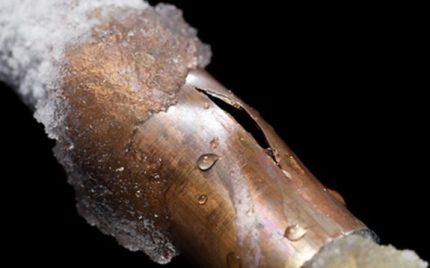
Technological progress and cheaper equipment of the smart home allows you to control and change the heating parameters remotely using a smartphone.
The main thing is to be in the range of cellular communications and the Internet. This further expands the possibilities of using water, because it is possible to take measures in a timely manner and prevent its defrosting.

Other amenities, such as raising the temperature in the room before arrival and the economy mode during departure, are included.
The choice of water for heating is advisable if a backup heating system is provided. If heating in winter is used periodically or there is a chance of shutting down and defrosting the equipment, it is better to use non-freezing fluids. For example, in a country house with short-term visits typical of a winter residence.
Filling with non-freezing coolant
Before figuring out how to fill various heating systems with non-freezing fluids or antifreeze, you should understand their varieties.
For the normal operation of heating systems, antifreezes (anti - against, freeze - freeze) should be:
- non toxicexcluding the possibility of the slightest threat to people;
- non-combustible, and their pairs are explosion proof;
- inert to the materials of which the heating system is made;
- have a specific heat not less than its calculated value;
- fluidity.
In its “pure” form, antifreezes are aggressive, capable of destroying pipelines, boilers and heating appliances. To reduce or completely eliminate the negative properties of non-freezing liquids, they are diluted with water in the proportions specified by the manufacturer of the compositions.
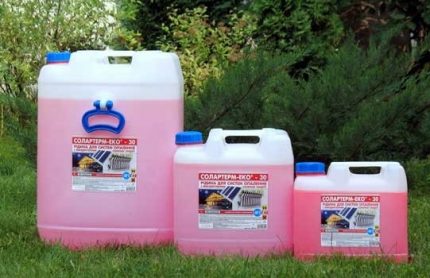
They also use additives: anticorrosive, stabilizing, cleaning, antifoam and others. The less water, the lower the freezing temperature and the higher the cost. When diluting antifreezes, you usually need to add the additives that come with the kit. Additives work at a certain concentration.
Without a complex of additives, the compositions can not be used, as they provide the specified parameters. For the same reason, it is not recommended to mix different fluids, especially with a different base. Their service life sharply decreases. Antifreezes have a high viscosity, they can not be used in heating with natural circulation.
The average shelf life of organic coolants is 3 to 5 years, through which additives lose their properties and the liquid becomes aggressive. When replacing, the old antifreeze must be pumped out and taken away for disposal, which additionally increases costs.
Once cars used water for cooling, but now it is a rarity. Now in the world more than 70 percent of heating systems operate on water, but the percentage is constantly decreasing. The reason that inhibits the widespread spread of antifreezes is both their high cost and increased requirements for equipment, toxicity and the need for their disposal.
Spent their antifreeze, for more complete removal, merges in a state heated to 45 degrees.
Now the main equipment is designed for water and manufacturers value their reputation, often indicate that they do not guarantee work on antifreezes. Or indicate the permitted type of antifreeze under certain conditions. It’s dangerous to experiment yourself.
Non-freezing compounds are critical to overheating. They begin the decay and formation of gases, solid deposits. Air jams, burns in boilers and equipment failure form.
At temperatures of 80 degrees and above, vaporization begins, so modern boilers have heating up to 75 degrees, supported by automation. If exceeded, the boiler shuts down abnormally. With organic coolants, the temperature is reduced to 70 degrees.

For safe operation of the heating circuit with antifreeze, automation is needed that turns off the heating unit when the temperature is exceeded. If there is no such device in the heating system diagram, antifreezes should not be used as a heat carrier.
Typically, the technical documentation for boilers and equipment indicates the type of coolant. The use of another coolant removes liability from the manufacturer and terminates its warranty service.
For refueling heating systems, heat carriers based on ethylene glycol, propylene glycol and glycerol are produced.
Cheapest Ethylene Glycol
The disadvantage is toxicity, a dose of 100 - 250 grams is fatal to humans. Has a third hazard class according to GOST. Toxic are also vapors. The permissible norm of MAC is 5 milligrams / cubic meter. meter. Therefore, in open heating systems can not be used. Banned for double-circuit boilers, because the leakage of funds into the hot water main is possible.
To exclude this, craftsmen make the water supply pressure higher than heating. But this does not give a full guarantee and may cause, in case of damage, a boiler failure. Use of ethylene glycol is permitted only for closed heating systems.

Leaks and breakouts of heating are very likely. If the system is filled with an inexpensive but toxic ethylene glycol based product, leaks can endanger the health of home owners. The relatively low price is the reason for the application. Health cannot be bought like antifreeze. Therefore, the choice is yours.
Ethylene glycol has 1.5-3 times greater penetration and compaction aggressiveness.

Automotive antifreeze, antifreeze, it is strictly forbidden to use, as containing more toxic additives.
Glycol coolants:
- The maximum temperature should be no more than 70 degrees, which further increases the size of the batteries.
- Viscosity is 40-60% higher and pumping requires 1.5-2 times greater engine power and minimizes bends, bends and increased pipe size.
- Volumetric expansion during heating is 140-150% more, it is required by the same amount, increased volume of the expansion tank.
- Density is 15 - 20% higher, strength characteristics increase.
The construction of a new system designed for the use of synthetic coolants, respectively, costs 1.3 - 1.5 times more expensive than the construction of a water counterpart. Do not forget about the considerable cost of the non-freezing liquid itself.
Alteration of the aqueous liquid is also not used, since the operating life is reduced and as a result is more expensive. Glycol mixtures are also aggressive to zinc, causing detachment and sludge that completely clogs the pipes. In older designs, galvanized pipes are common.
However, when taking into account the above disadvantages, ethylene glycol is still used. It is necessary to fill the systems only after all the equipment of the heating system has been adapted for refueling with antifreeze.
A special feature is the need to place refueling equipment on impervious coatings to prevent glycol from entering residential premises and to carefully monitor the transition hose connections. Although this, neat masters, do when refueling with any antifreeze.
Propylene glycol specifics
Recently, it has been actively displacing other types of coolants, although in its physical and technical parameters it is almost no different from ethylene glycol and requires almost the same change in the equipment of heating systems.
Belongs to GOST to the second class of danger and also requires disposal. MPC vapors - 7 milligrams / cubic meter.
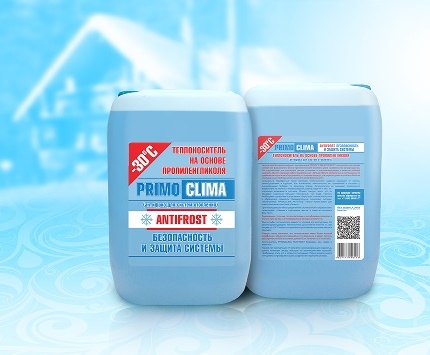
Advantages of this non-freezing coolant:
- relatively environmentally friendly and harmless to humans. This is the main reason why now many manufacturers recommend it for single-circuit and double-circuit boilers;
- lubricatingthat facilitates the operation of pumps;
- at full evaporation of water does not freezekeeping fluidity;
- corrosion activity is very low, and with additives it is still improving;
- when spilling, rinse with water and wipe.
Polypropylene glycol fluids have flaws. it
its value, which is 1.5 - 2 times higher than ethylene glycol, because it is produced mainly abroad. The liquid is aggressive to metal pipes, not compatible with pipelines constructed from galvanized pipes, as Upon contact with zinc, the additives of the composition lose their properties.
Above the permissible temperature, decomposition begins with the formation of gases, foam and a solid insoluble precipitate.
Despite all these shortcomings, it is considered one of the best coolants.
Feature of glycerin coolants
As harmless as propylene glycol at acceptable temperatures. Historically, they began to be used earlier for all these purposes, getting glycerin from fat. The strait is not dangerous. The advantage is the price, which is lower than that of propylene, remaining above ethylene glycol. Therefore, it is used with counterfeiters to dilute polypropylene glycol.
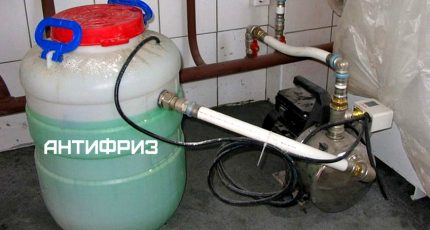
Even some European manufacturers add it up to about 10%, so you need to be careful and read the composition. On the other hand, in the European Union, as the main component of the coolant, glycerin is not used.
Glycerin has a wider - up to 105 degrees, extreme temperatures. Hazard class two.
Disadvantages:
- If the maximum temperatures are exceeded during decomposition, poisonous gas is released that has an unpleasant odor.
- During evaporation, it becomes gel-like, burns and decomposition begin, it is necessary to regularly compensate for evaporation by adding distillate.
- They have high viscosity and require larger diameter pipes.
- It foams easily, which is partially removed by additives.
- It has increased penetrating power and requires the use of paronite and teflon gaskets.
It has significant corrosion activity, and has long been rejected by automakers. Due to modern additives, this is reduced and nullified. Yes, even with proper operation.
Glycerin coolants, however, are recommended to a greater extent than ethylene glycol because of their harmlessness and with a complex of additives they work satisfactorily in heating networks. The trouble is that in the pursuit of money, they produce products without or without a full range of additives. You need to be careful when buying.
Heating systems with electrode boilers, in which the coolant is a heating element, can also be classified as a special kind. Heating occurs when current flows through the solution during its ionization.
In addition to the above, the solution should have a calculated electrical resistivity of the order of 3.5 - 4 KΩ × cm.To do this, use an aqueous solution or a solution of propylene glycol with additives, which create the necessary electrical characteristics.
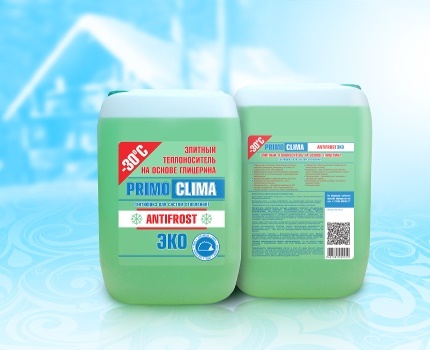
Conclusions and useful video on the topic
The clip will visualize the process of filling the heating circuit and setting the expansion tank:
Common to all coolants is the gradualness when starting the system. The temperature must be increased slowly, stepwise, not only because of the coolant, but also additives, which also change their properties with temperature.
The process of filling systems with both water and antifreeze is similar, but the requirements for quality of work and safety when refueling with antifreeze are increasing. Spent antifreeze, they require disposable containers and disposal for disposal.
If you have questions about the topic of the article or already have experience in filling heating systems with coolant, please share it with our readers. Leave your comments at the bottom of the article.

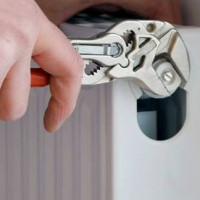 Removing air from the heating system: how to bleed air
Removing air from the heating system: how to bleed air  How to pressure test a heating system with your own hands
How to pressure test a heating system with your own hands  Features of flushing the heating system: an overview of the best ways
Features of flushing the heating system: an overview of the best ways  Distribution comb of the heating system: purpose, principle of operation, connection rules
Distribution comb of the heating system: purpose, principle of operation, connection rules 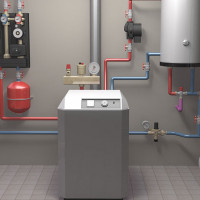 Economical heating of a private house: choosing the most economical heating system
Economical heating of a private house: choosing the most economical heating system 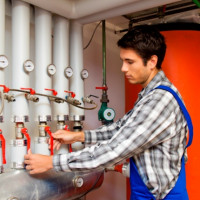 Energy-saving heating systems: how and what can be saved?
Energy-saving heating systems: how and what can be saved?  How much does it cost to connect gas to a private house: the price of organizing gas supply
How much does it cost to connect gas to a private house: the price of organizing gas supply  The best washing machines with dryer: model rating and customer tips
The best washing machines with dryer: model rating and customer tips  What is the color temperature of light and the nuances of choosing the temperature of the lamps to suit your needs
What is the color temperature of light and the nuances of choosing the temperature of the lamps to suit your needs  Replacement of a geyser in an apartment: replacement paperwork + basic norms and requirements
Replacement of a geyser in an apartment: replacement paperwork + basic norms and requirements
I don’t understand why use antifreeze in heating systems? Its only property that suits us is its low freezing temperature. We are forced to practically struggle with all its other parameters, since they harm us in the heating system. Well, why bother? Water, if filtered and softened, is the best heat carrier without any internal or external aggressiveness.
Hello. In my opinion, you are absolutely right. The technical properties of antifreezes do not at all coincide with the classic coolant and in fact can harm the heating system. Even manufacturers of heating appliances write about the inappropriateness of using antifreeze, but, unfortunately, people prefer to ignore these recommendations in the Russian climatic conditions.
I somehow did not think about draining the water from the system. In the summer, of course, heating is not necessary. And by the fall, he simply added the evaporated water, and that’s it. Or can’t you do this? Is it necessary to annually release the coolant and fill in a new one? I’m also afraid that there would be an air jam if I try to change the water myself. I’m still a host, and I don’t know how to do everything, but I would very much like to learn.
Hello. You need to drain the coolant:
1. When fixing leaks.
2. Replacing radiators.
3. System cleaning.
4. Change of coolant.
It is not necessary or even harmful to completely drain the water after the heating season.
When filling or adding coolant to the system, is it necessary to turn off the circulation pump? Thank.
My husband and I decided to add antifreeze to the heating system, as there were freezing and damage during a power outage. Please tell me, my husband wants to fill it on his own, maybe it's better to call a specialist? I understand that if we change it ourselves, the boiler may not work correctly.
Hello. To fill in antifreeze, it is best to invite a specialist.This is a laborious process and a lot of technical nuances. But in general, most boiler manufacturers do not recommend the use of antifreezes.
There are many reasons for this - for example, the technical characteristics of water and antifreeze are different in terms of heat capacity, expansion, temperature exposure, substances formed as a result of thermal sediment, harmful system, their fluidity, permeability, toxicity and so on. It is much easier to install a UPS or choose an electrically independent boiler.
We have a Lemax boiler. The coupon says that the manufacturer’s guarantee for the boiler will be valid, when refueling the antifreeze Thermagent, we have already purchased Thermagent - 30. Water froze, there were damages, all the same we decided to try antifreeze. Do not tell me what to pay special attention to when maintaining the system?
Hello. Most importantly, pay attention to the fact that the thermal agent is more fluid than water, so carefully check all joints for good sealing before filling. And, of course, read the instruction manual carefully.
Also note that it is impossible to use this antifreeze in systems with galvanized pipes, you cannot bring it to a boiling point, it is advisable to install an expansion tank of at least 15% of the system volume and choose the right circulation pump, well, and other manufacturer's recommendations indicated on the product packaging.
“The coupon says that the manufacturer’s warranty on the boiler will be valid when refueling the Thermagent antifreeze” - you could not take a photo of the warranty card and remove the personal data in the editor, send us, because the manufacturer answered when calling the hotline that the antifreeze was used based on propylene glycol is allowed but not required. Although this point needs to be checked with a technician who is not there until Monday. It is interesting to look at this item in your document and clarify after the weekend in the manufacturing company for answers to other users. And if possible, indicate the specific model of Lemax boiler that you purchased.
Yes, by the way, please note that it was indicated above that it is undesirable to use antifreezes and this is true if you have the opportunity to use a natural coolant suitable for physical properties without freezing. But, let's make a footnote - again, in some cases, the system freezes because of the climate, or you have to go away for a long time from home. Therefore, look at the recommendations of the boiler manufacturer (it is possible or not to use antifreeze) and note that ethylene glycol is categorically not recommended in most cases. If you already use a heat carrier, then let it be safer propylene glycol. You should also be careful about the heating system, so that it fits this type of coolant.